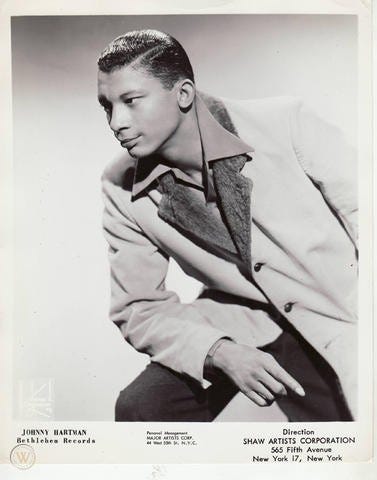
An offer I couldn’t refuse: Ken Poston, majordomo of KSDS Jazz Radio 88.3, asked me to do an episode of Sing! Sing! Sing! in celebration of the great Johnny Hartman. This year, for Black History month, the station is doing an extended deep dive into the music of John Coltrane, and, obviously, the 1963 masterpiece of an album, John Coltrane & Johnny Hartman, is going to be a key part of that.
I think it’s safe to say that everybody reading this knows that album by heart - it’s surely one of the most beloved works in all of American music. (I actually have a hard time admitting that this is where I first heard “Lush Life” - back in the 1980s it took me years to track down the original version by Nat King Cole.) Most people are aware that Hartman followed the Coltrane project up with two additional albums for Impulse! produced by Bob Thiele in a similar vein, in 1964: The Voice That Is! and I Just Dropped By to Say Hello. Beyond that, the truly hip know that he made a total of eight albums, as Louis Armstrong would say, at the height of his height, which, I think we can safely say, was from 1955 to 1966.
All of these are classics:
Songs from the Heart (Bethlehem, 1956)
All of Me: The Debonair Mr. Hartman (Bethlehem, 1957)
And I Thought About You (Roost, 1959)
John Coltrane and Johnny Hartman (Impulse!, 1963)
The Voice That Is! (Impulse!, 1964)
I Just Dropped By to Say Hello (Impulse!, 1964)
Unforgettable Songs by Johnny Hartman (ABC-Paramount, 1966)
I Love Everybody (ABC, 1966)
Hartman’s recording career actually divides into three segments - the middle period includes the years of these classic LPs, after which he didn’t make it back into a studio again until 1972. From then until his death at the age of 60, he made another nine albums - most of which are very good, but still it’s clear that the eight albums of the ‘50s & ‘60s are the sweet spot.
What largely isn’t known is that Hartman had a very active career in the 78 RPM singles era, starting in 1947 in his native Chicago. Although his most famous collaboration would be with Coltrane in 1963, in the early period he teamed up with a wide range of headlining instrumentalists, from Earl Hines to Dizzy Gillespie to Stuff Smith, Erroll Garner, and even Perez Prado. Sometimes he was recording for jazz and African-American labels, and at certain points his music was aimed at the hit parade, but it’s a brilliant and vibrant discography with a lot of high points and surprises. (Regrettably, there isn’t a comprehensive collection of this material … Mosaic Records, Sepia Records, are you listening? Surprisingly, the majority of these aren’t even on YouTube or any of the streaming services.)
(Before I go any further, let me acknowledge Gregg Akkermann and his wonderful biography, The Last Balladeer: The Johnny Hartman Story, published by the Institute of Jazz Studies at Rutgers in 2012. Also the excellent and complete Hartman discography compiled by Mr. Akkerman and Noal Cohen, which is accessible here.)
The general idea of this post is that I’ll start at the beginning of Hartman’s career and keep going until SubStack tells me I’ve hit the length limit.
Hartman’s first date was produced by the Chicago-based bandleader, songwriter, and entrepreneur Marl Young. There are two titles on his Sunbeam label - neither is a particularly good song, or one that we would even want to hear if it weren’t for Hartman. (I was surprised to find both of these on the Internet Archive.)
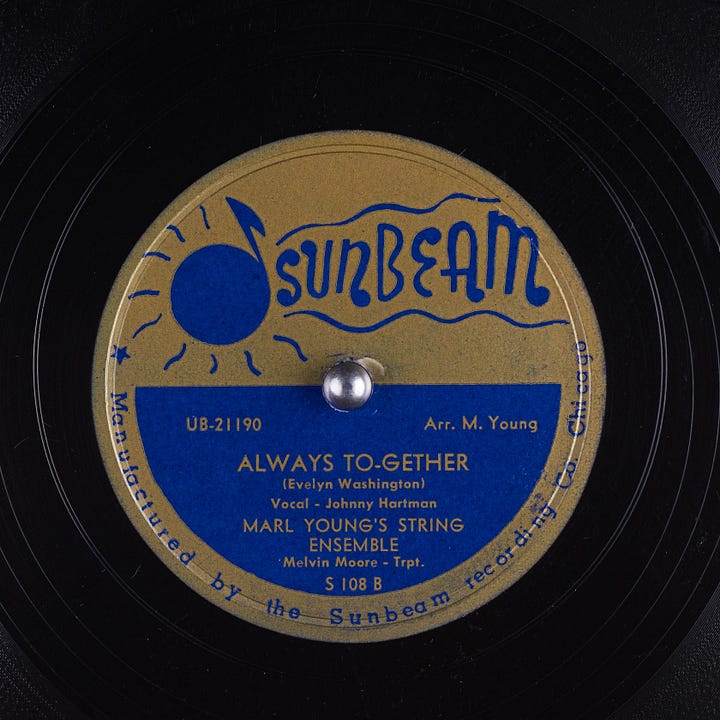
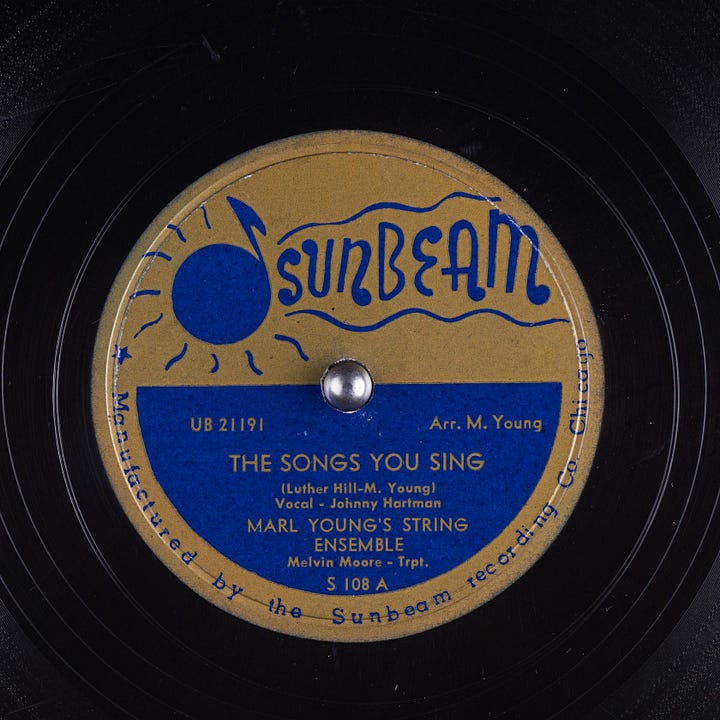
Later in 1947, Hartman joined Earl “Fatha” Hines and his Orchestra - more or less as a successor to both Billy Eckstine and Sarah Vaughan. He recorded four tunes in the studio that year with the pioneering jazz pianist; regrettably, most of these were lesser efforts by Hines as a songwriter. These have all been issued on the French Classics label, but I’ll include the best of them, “Ain’t Misbehavin’,” below. (My buddy Henry Schmidt, Jr., has also discovered a previously unknown radio performance by the Hartman-Hines combination, hopefully to be issued on a future release.)
At the end of 1947, Hartman did his first titles as a solo artist for the independent label Regent Records, based in New York. These are quite lovely, although Hartman is not yet the master stylist he would be just a few years later. Clearly, Regent is trying to compete with Columbia (Sinatra), MGM (Eckstine), and Capitol Records (Nat King Cole) in the pop stakes, but the songs are all good and well arranged, mostly with a small string orchestra, by Danny Mendelsohn. These don’t appear to have sold much at all in their original 78 release, in fact I can’t even find a shot of any of the labels, but they’ve been widely available on LP and CD. His version of “I’ll Never Smile Again” certainly shows the influence of FS:
The four sides with Dizzy Gillespie are all great - three standards plus “If Love Is Trouble,” an excellent, modernistically-tinged new ballad by jazz composer George Handy and lyricist Jack Segal. Gillespie deserves credit for so excellently spotlighting a great singer. I’ll just include that one here:

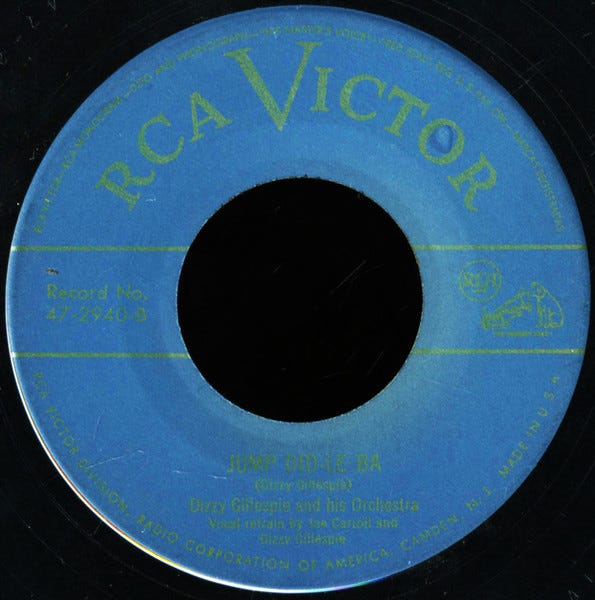
Next time someone knocks Mitch Miller - and it will probably be me - remind them that “the bearded guru of the echo chamber” produced some of Johnny Hartman’s best early work. While with Dizzy, Hartman “pacted,” as Billboard would say, with Mercury Records in 1949, a relationship that lasted two sessions of four songs each. Four were with a studio orchestra conducted by Jimmy Carroll, one of Miller’s chief aides-de-camp, and the other four are among the best vocal accompaniments ever performed by the rapidly-rising keyboard star Erroll Garner.
I’ll just include one of each below. As it happens, Hartman recorded an excellent song by Earl Hines in this batch, ironically not with the Fatha himself. Here’s “Everything Depends on You,” later famously sung by Chet Baker. I also particularly like “Home,” a 1931 song put on the jazz map by Louis Armstrong and later sung by Nat King Cole. These eight Mercury sides are excellent, but apparently no one bought them and Hartman was looking for another record deal shortly enough.

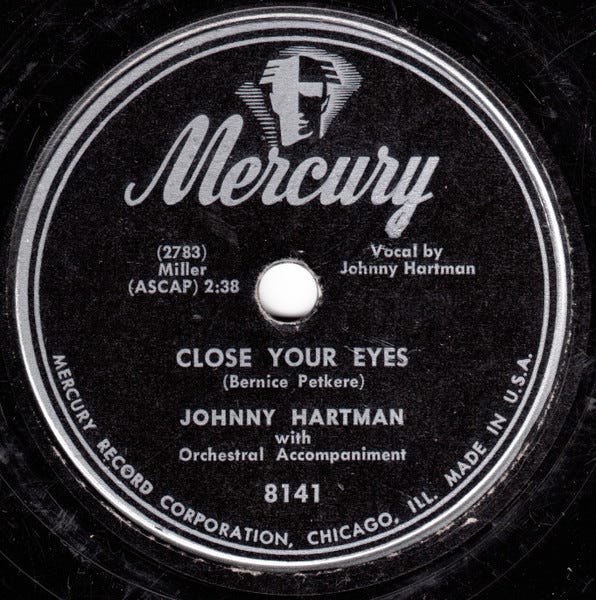
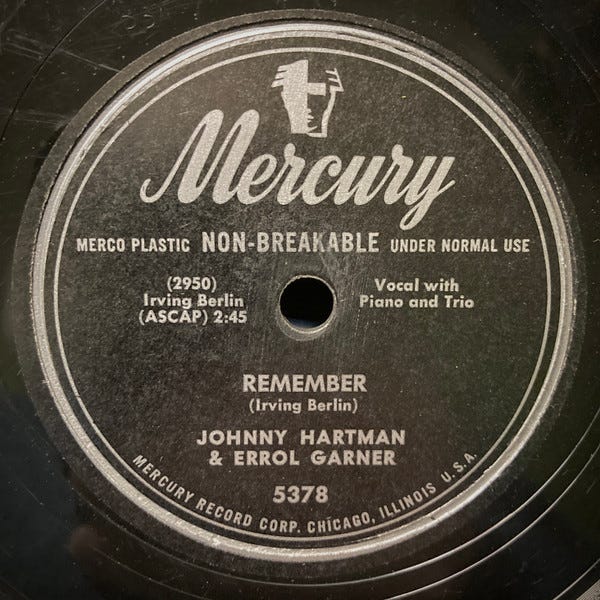
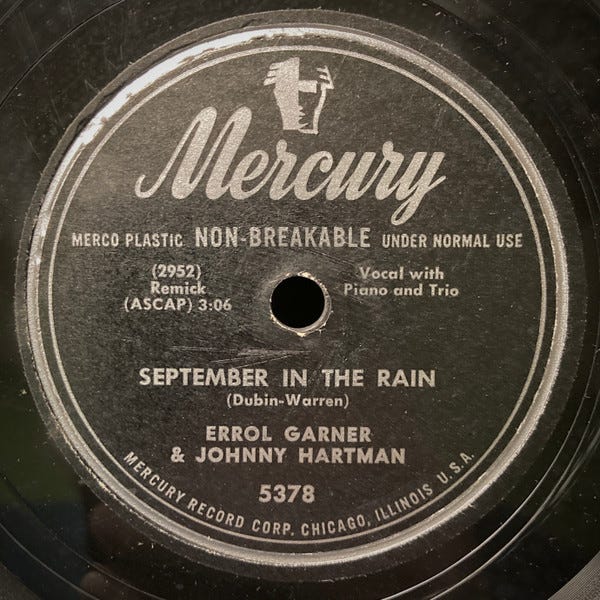
As I expected, we’re almost out of capacity already. I was hoping to get as far as Hartman’s 1950 session for another Chicago-based independent label, Apollo Records. He cut these in New York with an all-star studio orchestra directed by George “The Fox” Williams. These are among the rarest Hartman sides, none has yet been reissued in any form, and only one is even on YouTube - thanks to Hartman biographer Gregg Akkermann. (Thanks also to Gregg for the Apollo labels below.)
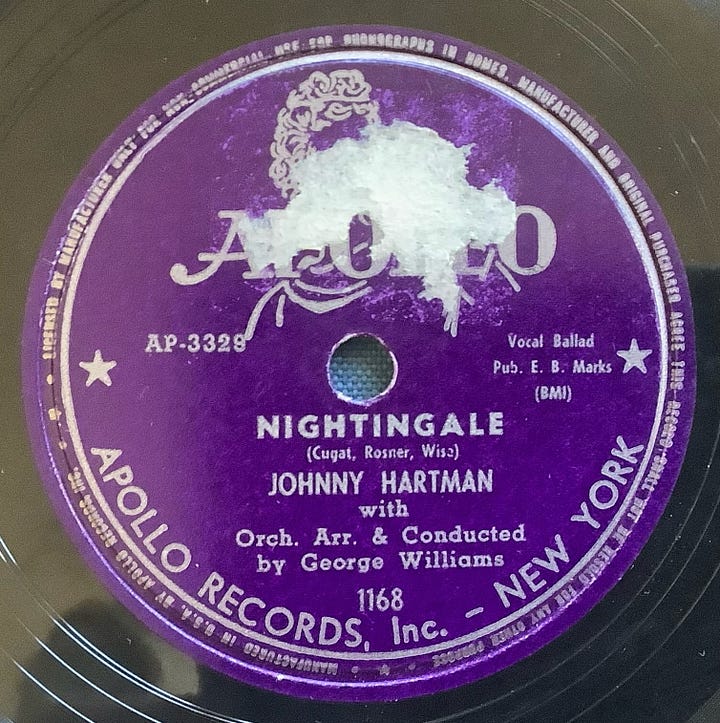

Alas, we have reached the “email length limit” for SubStack. If anyone is interested, I’ll do a “Johnny Hartman: Deep Cuts, Part 2” which will offer highlights of his sessions from 1951 to 1955. In the meantime, tune into Sing! Sing! Sing! on Saturday, February 17, for a comprehensive survey of Hartman’s career from the beginning up to the end of the classic LP period in 1966.
Coming next: Some very big news for The NAT Pack!
Tune in Tomorrow - same NAT time, same NAT station!
Very Special thanks to the fabulous Ms. Elizabeth Zimmer, for expert proofreading of this page, and scanning for typos, mistakes, and other assorted boo-boos!
Sing! Sing! Sing! : My tagline is, “Celebrating the great jazz - and jazz-adjacent - singers, as well as the composers, lyricists, arrangers, soloists, and sidemen, who help to make them great.”
A production of KSDS heard Saturdays at 10:00 AM Pacific; 1:00PM Eastern.
To listen to KSDS via the internet (current and recent shows are available for streaming.) click here.
The whole series is also listenable on Podbean.com, click here.
SLOUCHING TOWARDS BIRDLAND is a subStack newsletter by Will Friedwald. The best way to support my work is with a paid subscription, for which I am asking either $5 a month or $50 per year. Thank you for considering. (Thanks as always to Beth Naji & Arlen Schumer for special graphics.) Word up, peace out, go forth and sin no more! (And always remember: “A man is born, but he’s no good no how, without a song.”)
Note to friends: a lot of you respond to my SubStack posts here directly to me via eMail. It’s actually a lot more beneficial to me if you go to the SubStack web page and put your responses down as a “comment.” This helps me “drive traffic” and all that other social media stuff. If you look a tiny bit down from this text, you will see three buttons, one of which is “comment.” Just hit that one, hey. Thanks!





I would love more Hartman "deep cuts" editions!
Thanks for bringing attention to one of my favorite singers. I enjoyed Gregg Ackerrmann’s biography too. I’m especially partial to several songs from what you’d call his later period. For example, he sings “Nobody Home” on YouTube. It’s a song in the “Cottage for Sale” vein. Emotionally powerful!